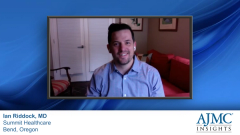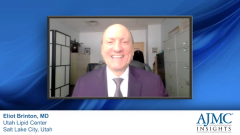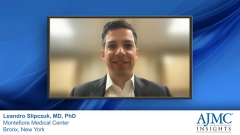
Ensuring Continuity of Care for the ASCVD Patient
Ian Riddock, MD, and Leandro N. Slipczuk, MD, PhD, discuss the importance of LDL-C management as part of the discharge plan for patients, as well as ensuring continuity of care from the inpatient to outpatient setting.
Episodes in this series

Ian Riddock, MD: As far as discharge planning goes and having comprehensive evaluation of lipid lowering therapy with regards to LDL [low-density lipoprotein] cholesterol, (A,) I think it’s important that first of all that these things are being checked in the hospital, starting with getting a lipid panel when they come in. And (B), we must recognize that the LDL cholesterol is often reduced in the setting of an ACS. And so, there are various clinicians who are not experts at this who are rounding on some of these patients in the hospital. And the discharge planners need to be wise to all of this and they need to be experts if you will in this sort of thing, and recognize and inform the care team that, “Hey, even though their LDL cholesterol may look OK to you, this is what we need to be doing. And here’s why.” But in a way they need to take on that care and augment the care team. Making sure that they’re on high intensity therapy, no matter what that means if they were not ever on a high intensity statin, well, they need to be placed on one making sure that they have follow up within 1 week ideally when they get followed up. And in my opinion, they should all have follow up with a preventive specialist, whether that’s a lipid clinic or a preventive cardiologist, or even their internist, who is a preventive-minded individual. But there are many cardiologists, for instance, who frankly may not be focused so much on lipid prevention, but that all needs to be part of that follow up plan. The other thing is that they need.
Leandro N. Slipczuk, MD, PhD: A good discharge plan after a patient has an acute coronary event involves—it starts first in the hospital and making sure that the patient has all the required medications, such as high-intensity statins to begin with, and that they understand why they are taking the medications. And then the patient needs to ideally leave- with the medications- the hospital and have an early close follow-up, ideally within a week or 2 weeks, to see their cardiologist or at least their primary care physician in the office. It’s also great, if they are not at goal when they are having the ACS- that means that their LDL cholesterol is over 70 or over 55, depending on the risk of the patient—that we make sure that patient gets a follow-up check for the cholesterol levels at 30 days.
That’s the ideal scenario for a discharge plan, but most hospitals in the country are struggling with this. And this is a multifactorial approach. It depends part on the patients; part on the organizations; part on the location, and doctors, and nurses. And it requires the whole team to meet this goal. But it’s an important goal because it will directly affect the outcomes, and we know that already. Some of the struggles are patients understanding the medications, making sure that we’re explaining to them, so then they take the medications. If they don’t take them when they leave, that doesn’t work. On some part, it depends on the education for the providers to understand their changes in therapy and how that will affect the cholesterol levels. I’ve seen it in different institutions, that, for example, a patient comes in [on] a moderate-intensity statin and they have an acute coronary event. And the only thing that happens is that maybe the physician or the residents, they just double the dose of the statin. And we know that that only has a very mild effect on their level of LDL, about 6%. It’s important to understand the effect of the therapies that we are starting or changing and the goal or what we’re trying to accomplish for the patients. That’s the limitation number 2, I think. Something that I’ve seen that hospitals can struggle with is the approval when we want to do other type of medications, such as PCSK9 inhibitors. Then the struggle reaches a new level; that is, getting these medications approved so patients can get them soon within their high-risk period that is within the first month and the first year. That’s problem number 3. There’s a lot of things we need to accomplish to get our patients to goal. But the focus should be on a team approach and having dedicated people to meet these goals.
To close the gap, and reach appropriate therapy, and get our patients to goal, it’s key to have dedicated people for this. It’s key to have a lipid clinic or at least a lipid specialist. And this does not need to be a cardiologist. This champion to reach this goal could be an internal medicine doctor. It could be an endocrinologist. Could be a pharmacist. Could be a nurse practitioner. It’s just someone that has trained in lipid management. And this can be done at the NLA [National Lipid Association]. There are many courses. There are many resources that we must reach this person, education, and to have them trained to be able to reach this goal. Once we identify a champion to reach this, that person will gain experience, gain education, and then the system will start to depend on that person to make this change. Many people think that to set up a lipid clinic or a lipid specialist, you need a big academic center. But that’s not the case. Every institution, even if it’s a community hospital, would highly benefit from this. And this person will be working in prevention. But especially, focusing on the very high-risk patient will benefit everyone in the institution.
This transcript has been edited for clarity.
Newsletter
Stay ahead of policy, cost, and value—subscribe to AJMC for expert insights at the intersection of clinical care and health economics.









































